Housing Singapore's Ageing Population
Singapore’s population is ageing rapidly. According to research from the Prime Minister’s Office, the number of people aged 65 and older increased from 10.1 per cent in 2010 to 16.8 per cent in 2020.[1]. By 2030, about 23.7 per cent – or one in four – will be 65 or older, doubling the current number of seniors from 440,000 to over 900,000[2].
Singaporeans will also live longer. The country’s average life expectancy has increased from 81.7 years in 2010 to 83.9 years in 2020.[3] It is set to increase further to 85.4 years in 2040[4], which will be the third-longest lifespan globally.
The built environment typically does not consider demographics in its design and development. To support a better and more inclusive quality of life for our seniors, this needs to change now. What facilities and requirements are needed? How do we ensure our seniors continue to be engaged and fulfilled?
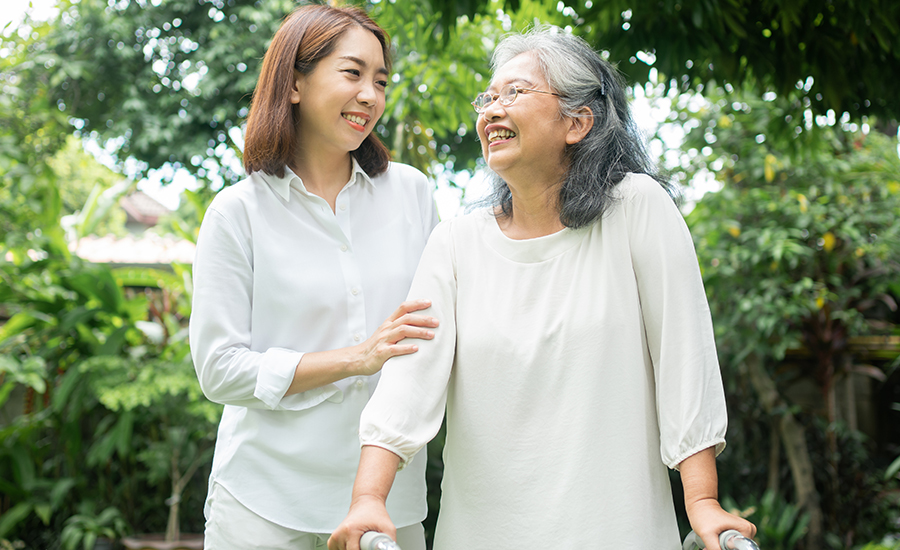
MAKING SILVER YEARS GOLDEN
The government wants Singapore to be “A Nation for All Ages”, enabling people to “age in place”. Every individual should live at home and in the community safely, independently, and comfortably, regardless of age, income or ability level[5].
Creating optimal spaces for our seniors is therefore critical to Singapore’s vision of a senior-friendly society. A study from the Singapore Medical Journal showed that Singapore’s seniors have much more active lifestyles compared with counterparts from other countries[6], and the infrastructure developed should reflect this.
As we consider the needs of our seniors, we focus our investigation of inclusive spaces in three dimensions: their daily lives, mental well-being and their integration and connectedness with the community.

Daily Living
Seniors want financial and home independence. In fact, 78 per cent desire to have their own home.[7]
This is backed up by statistics: The percentage of seniors living alone over the years has been steadily increasing, from 6.6 per cent in 2000 to 8.2 per cent in 2010. In 2015, the figure was 8.9 per cent and in 2020, it was 11.2 per cent.
Living arrangements can have a direct effect on an older person’s state of mind. A Duke-NUS study showed that those with lower depressive symptoms either live alone and maintain good social networks or live with family members. [8]
Re-thinking homes for the elderly
Senior-friendly homes are vital. The Housing & Development Board (HDB) has continuously improved facilities with initiatives to help seniors age well. For instance, the ubiquitous Lift Upgrading Programme and the Enhancement for Active Seniors programme provide subsidies of up to 95 per cent for retrofit features in HDB flats to make them safer for seniors (e.g. grab bars, non-slip bathroom titles, gentle ramps for easy wheelchair access). [9]
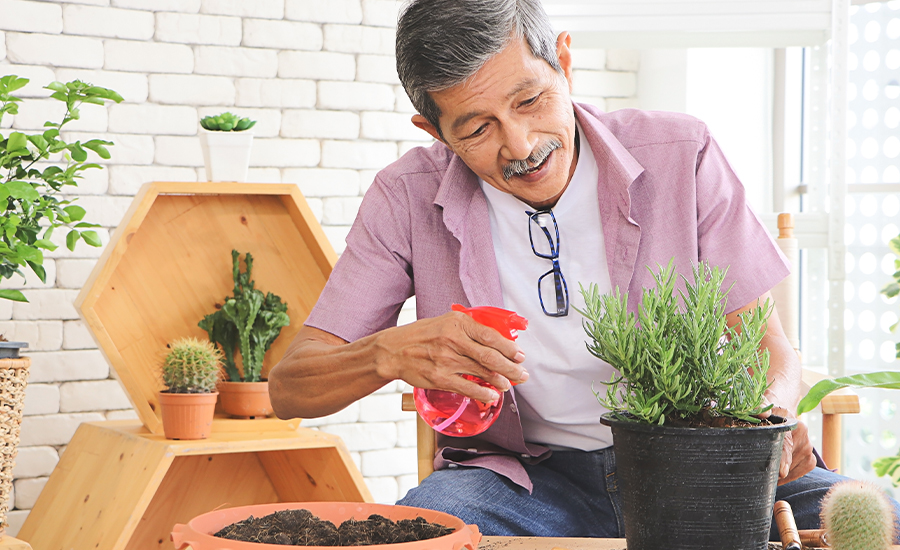
The private residential sector could also play a more important role in providing elderly housing options. Besides offering such elderly-friendly features, residential projects with shorter leases could provide better affordability for the elderly.
Homes are more than just physical spaces with four walls. Increasingly, developers and policymakers are embedding buildings with technology to help the elderly age in place with comfort and security. The advent of the Internet of Things and smart homes are providing new means to monitor the health and safety of older individuals and making it easier for the elderly to conduct their daily chores and get help and care should emergencies arise.
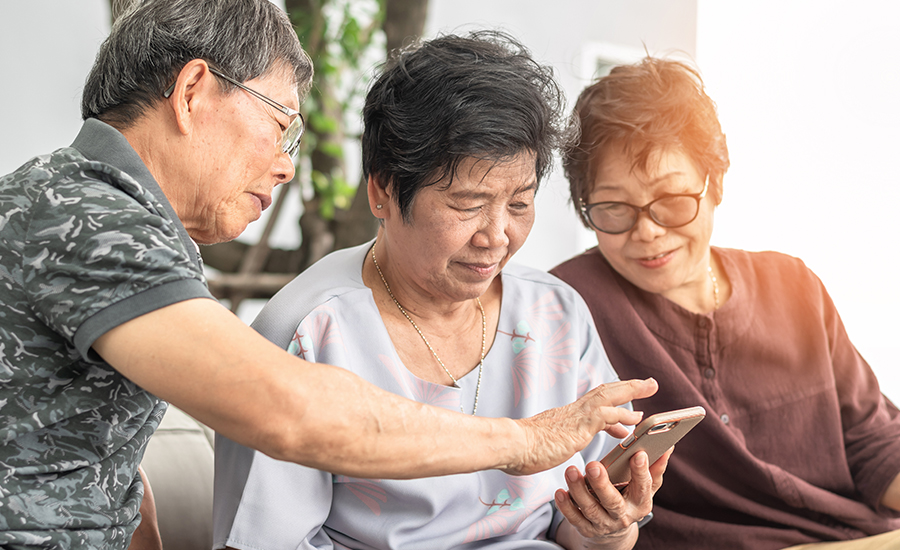
Integrating amenities and healthcare in the community
Ageing-in-place also entails helping seniors stay healthy at home to avoid staying in hospitals. Ageing-in-place refers to an active and independent lifestyle that seniors choose to lead as they advance in years.
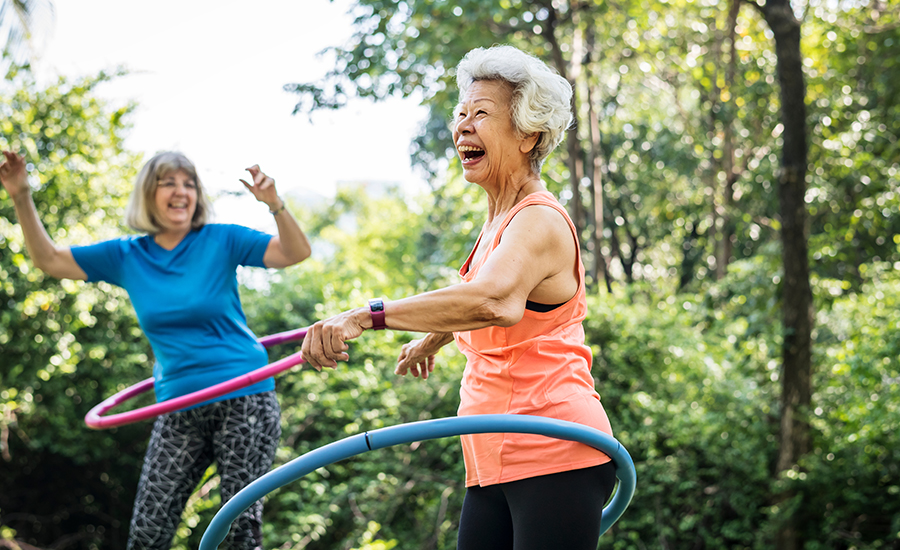
Neighbourhoods like Kampong Admiralty stand as a shining example of how the built environment can make a difference for the elderly. With a hawker centre, two-storey medical centre, retail and other communal facilities all in a single location, the elderly there have ready access to all their needs in a single location. The goal is a “15-minute neighbourhood”, an urban planning concept which aims for residents to meet most of their needs within a short 15-minute walk.
Across Singapore, there is demand for more of such community-based amenities for seniors, especially for healthcare. Seniors with more than one health condition often need to make multiple visits to different specialists, which can cost unnecessary time and money. Moving away from fragmented, episodic care to person-centric care is essential, as the focus shifts from treating diseases in isolation to treating people as a whole.[10]
Mental Well-Being
The second key pillar of keeping Singapore’s greying population active and happy is caring for their mental well-being. The social and healthcare needs of Singapore’s ageing population are getting increasingly intertwined, necessitating more robust social support to counter the rising risks of isolation.
The number of seniors living alone is expected to climb from 77,000 in 2025 to 92,000 by 2030[11]. In 2015, more than one in two (51 per cent) older Singaporeans aged 60 and above reported being lonely. Loneliness has been associated with a slew of other issues – poorer health, cognitive decline and depression, among others.[12]
During the COVID-19 pandemic when Singaporeans were encouraged to stay home or work from home, only 46 per cent of elderly residents reported being satisfied with life.[13] Many felt isolation or loneliness, resulting in lower levels of well-being.
Some ways to improve mental well-being include having social networks, intergenerational engagement and close family ties.
Building support networks
As family sizes shrink, familial support needs to be complemented by community support, especially since a large group that often falls through the cracks of existing programmes are seniors living with children, rendering their loneliness more ‘invisible’[14]. One in five elderly persons aged 75 and above living at home with their families exhibit signs of depression[15].
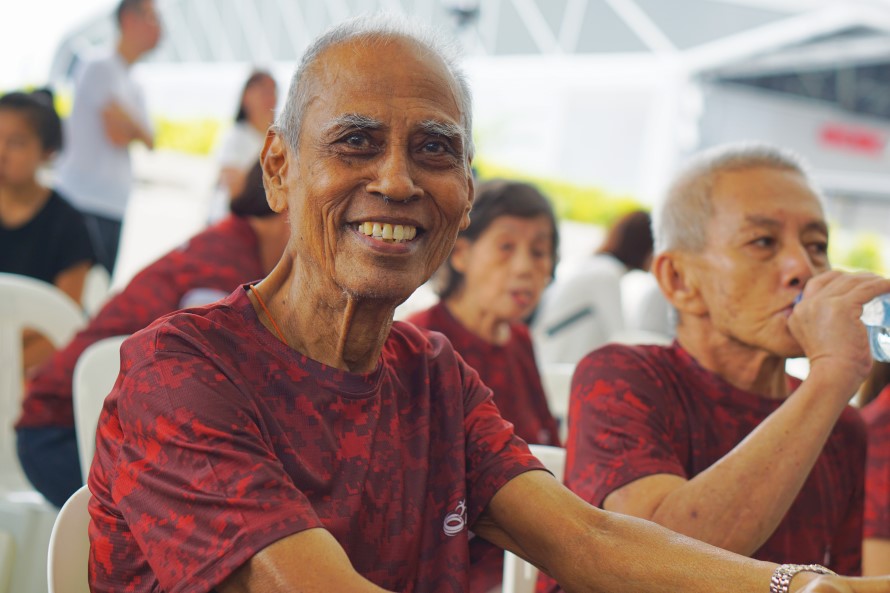
Various segments of society can help to play a role in managing the rise of loneliness. Neighbours and friends can often alleviate loneliness and provide an informal sense of security[16]. The People’s Association Senior Citizens’ Executive Committees network, for example, has implemented elder-friendly sports facilities within HDB estates and converted void decks into spaces for Senior Citizens’ Corners and Residents’ Committee centres where members can gather for events[17].
Tech to the rescue
Integrating digital tools in the lives of seniors can give them a higher quality of life and even keep loneliness at bay[18].
For instance, Government Technology Agency of Singapore (GovTech) and the National University of Singapore (NUS) have collaborated to conceptualise wearable personal alert buttons (PABs) for the elderly that can be used to summon emergency services. One prototype named Buddy, a clip-on badge worn on the sleeve which displays a smiley face, has functions beyond sending distress signals. It also monitors vital signs and facilitates social engagement because of its expressive and versatile screen.
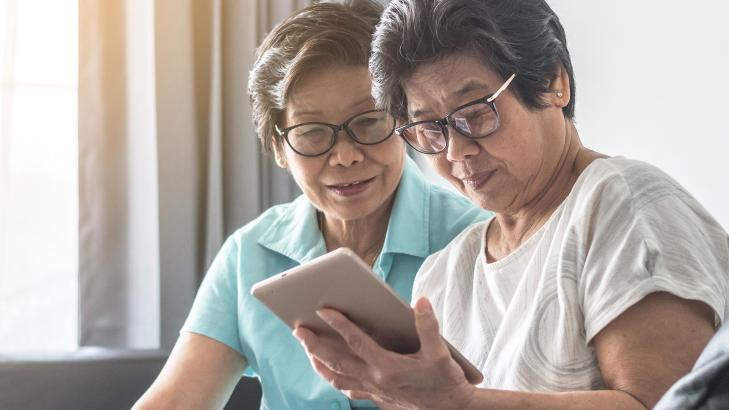
Staying connected
The Infocomm Media Development Authority’s (IMDA) Intergen IT Bootcamp encourages intergenerational bonding by creating group learning environments where youths teach seniors how to stay digitally connected, be it through basic computer skills or social networking tools like Skype and Facebook.[19]
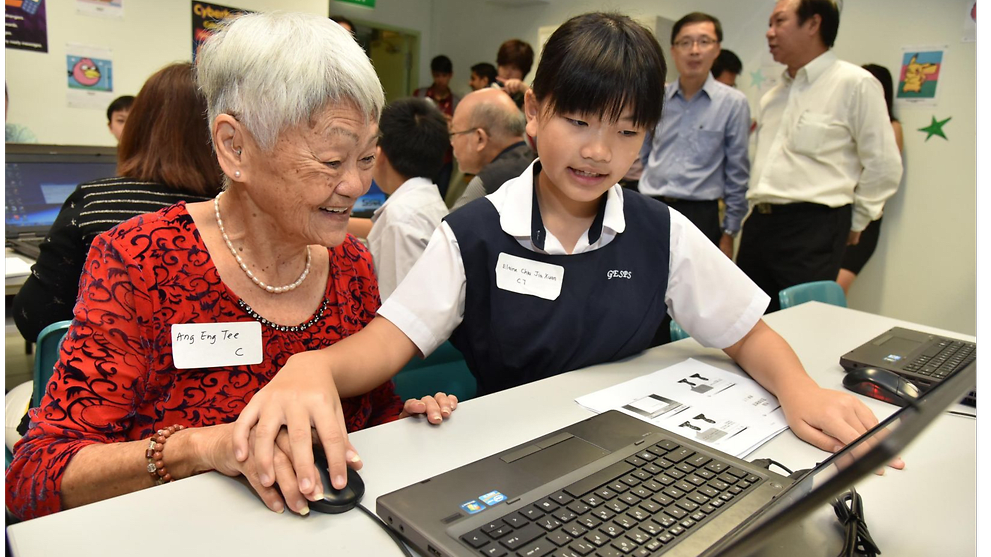
Social Living & Accessibility in Public Spaces
The second key pillar of keeping Singapore’s greying population active and happy is caring for their mental well-being. The social and healthcare needs of Singapore’s ageing population are getting increasingly intertwined, necessitating more robust social support to counter the rising risks of isolation.
The number of seniors living alone is expected to climb from 77,000 in 2025 to 92,000 by 2030[11]. In 2015, more than one in two (51 per cent) older Singaporeans aged 60 and above reported being lonely. Loneliness has been associated with a slew of other issues – poorer health, cognitive decline and depression, among others.[12]
During the COVID-19 pandemic when Singaporeans were encouraged to stay home or work from home, only 46 per cent of elderly residents reported being satisfied with life.[13] Many felt isolation or loneliness, resulting in lower levels of well-being.
Some ways to improve mental well-being include having social networks, intergenerational engagement and close family ties.
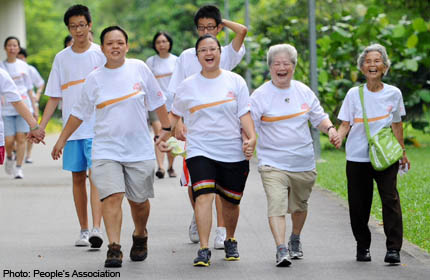
This will help seniors integrate better into the community. This is key as loneliness in old age has a direct effect on life and health expectancy. A study by Duke-NUS showed that lonely older adults lived as least three fewer years than their peers and spent less of their remaining life in good health or being active.[21]
Developers have a responsibility to provide public spaces that are also social spaces that can be easily adapted for various uses. However, it is not just about creating spaces, but offering programmes that invite the community to participate. .
CONCLUSION
Singaporeans are living longer, posing unique challenges that will require solutions given the island’s scarce resources. To this end, it is critical that the government, private sector and the social sector work together by using technology, innovation and design thinking to ensure that seniors’ golden years are their best years to come.
Footnotes:
[1] Strategy Group, Prime Minister’s Office, “Population in Brief” (2020), 9.
[2] Ministry of Health (MOH), “Action Plan for Successful Ageing” (2016), 8.
[3] Singapore Department of Statistics, “Data and Life Expectancy” (n.d.)
[4] Singaporeans’ average life expectancy forecast to rise to 85.4 years in 2040: Study. CNA. Retrieved from http://www.channelnewsasia.com.
[5] U.S. Centres for Disease Control and Prevention, n.d.
[6] Singapore Medical Journal, “Successful Ageing in Singapore: prevalence and correlates from a national survey of older adults” (2019)
[7] Lien Foundation and NTUC Income, “Supporting Singaporeans’ Aspirations in Aged Care” (2016), 2.
[8] Living arrangements, social networks and depressive symptoms among older men and women in Singapore International Journal of Geriatric Psychiatry 26(6):630-9
[9] MOH, “Action Plan” (2016), 70.
[10] MOH, “Action Plan” (2016), 64-67.
[11] Lien Foundation & Khoo Chwee Neo Foundation, “Safe but Soulless: Nursing Homes Need a New Narrative” (2016), 102.
[12] NVPC, “Issues Faced by the Elderly in Singapore”, 20.
[13] Malavika Menon, Fewer elderly residents were satisfied with life during Covid-19 pandemic: SMU survey. The Straits Times. Retrieved from https://www.straitstimes.com
[14] Ibid., 22.
[15] Ibid., 20.
[16] Elizabeth Linton, Bina Gubhaju and Angelique Chan, “Home Alone: Older Adults in Singapore” (Duke-NUS Medical School, 2016), 7.
[17] Debbie Loo, “Successful Ageing in Singapore: Urban Implications in a High-density City” (NUS Lee Kuan Yew School of Public Policy, 2017), 13.
[18] Government Technology Agency of Singapore (GovTech), “Designing a wearable that could save lives” (2020).
[19] Infocomm Media Development Authority (IMDA), “Digital Skills for Adults, Seniors and Persons with Disabilities” (n.d.).
[20] MOH, “Action Plan for Successful Ageing”.
[21] “All the lonely people”: The impact of loneliness in old age on life and health expectancy. Retrieved from https://www.duke-nus.edu.sg/allnews/media-releases/impact-of-loneliness-on-life-and-health-expectancy

